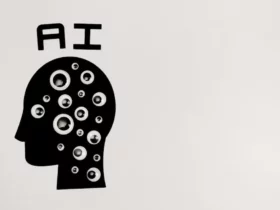In the dynamic landscape of modern education, the integration of technology has become a cornerstone for enhancing learning experiences across various domains. One area where technology has made significant strides is in supply chain education. With the rapid evolution of global markets and the increasing complexity of supply chain networks, there is a growing demand for professionals who possess not only theoretical knowledge but also practical skills honed through immersive learning experiences. In this blog post, we will delve into the ways technology is transforming supply chain education and revolutionizing the way students acquire knowledge and skills in this critical field.
The Evolution of Supply Chain Education
Before delving into the role of technology, it’s essential to understand the evolution of supply chain education. Traditionally, supply chain management was taught through textbooks, lectures, and case studies. While these methods provided a foundational understanding of concepts, they often lacked real-world applicability and interactive engagement.
Over time, as industries became more interconnected and supply chains grew in complexity, the need for experiential learning became evident. This led to the integration of simulations, hands-on projects, and industry collaborations into supply chain education curricula. Whether you are looking for supply chain management ivy tech or any other community college, students now engage in simulations, hands-on projects, and collaborations with industry partners, bridging the gap between theory and practice within state-of-the-art facilities. This shift not only enhanced students’ understanding of supply chain concepts but also provided them with valuable practical skills.
The Role of Technology in Transforming Learning Experiences
Simulation Software:
One of the most impactful uses of technology in supply chain education is through simulation software. These tools allow students to create virtual supply chain models, make decisions, and observe the outcomes in a risk-free environment. For example, software like SCM Globe and AnyLogic enables students to simulate end-to-end supply chain processes, including sourcing, production, distribution, and inventory management. By engaging with these simulations, students gain practical insights into decision-making, risk management, and optimization strategies.
Data Analytics and Visualization:
Another key aspect is the integration of data analytics and visualization tools. Supply chains generate vast amounts of data, ranging from sales figures to inventory levels to transportation metrics. Technologies such as Tableau, Power BI, and Python for data analysis allow students to analyze this data, identify patterns, and derive actionable insights. Through interactive dashboards and visualizations, students can grasp complex supply chain concepts more effectively and make data-driven decisions.
Blockchain and IoT:
Emerging technologies like blockchain and the Internet of Things (IoT) are also reshaping supply chain education. Blockchain technology enhances transparency and traceability in supply chains, addressing issues such as counterfeit products and supply chain fraud. By incorporating blockchain principles into coursework, students learn about the importance of data integrity, security, and decentralized systems. Similarly, IoT devices such as RFID tags and sensors provide real-time visibility into supply chain operations, enabling students to understand the role of data capture and IoT integration in supply chain management.
Virtual Reality (VR) and Augmented Reality (AR):
VR and AR technologies offer immersive learning experiences in supply chain education. For instance, VR simulations can transport students into virtual warehouses or manufacturing facilities, where they can interact with equipment, simulate order-picking processes, and experience supply chain operations firsthand. AR applications overlay digital information onto the physical environment, allowing students to visualize inventory flows, logistics routes, and process workflows in real time.
Benefits of Technology-Enhanced Learning
The integration of technology into supply chain education offers numerous benefits for students, educators, and industry professionals alike:
Real-world Simulations: Technology enables students to engage in realistic simulations that replicate complex supply chain scenarios, preparing them for challenges they may encounter in their careers.
Data-driven Decision Making: By working with data analytics tools, students learn to make informed decisions based on quantitative analysis and predictive modeling, a crucial skill in supply chain management.
Global Collaboration: Online platforms and collaborative tools facilitate global collaboration, allowing students to work with peers and industry experts from diverse backgrounds and locations.
Continuous Learning: With access to online resources and self-paced courses, students can engage in continuous learning and stay updated with the latest trends and innovations in supply chain management.
Industry Readiness: Technology-enhanced learning equips students with practical skills and knowledge that make them more competitive and industry-ready upon graduation.
Cost-effectiveness: Online platforms and virtual simulations reduce the need for physical infrastructure and travel expenses, making education more accessible and cost-effective for students and institutions.
Challenges and Considerations
While technology offers immense potential in enhancing supply chain education, there are several challenges and considerations to keep in mind:
Digital Divide: Access to technology and internet connectivity may vary among students, leading to disparities in learning experiences. Institutions must ensure equitable access and support for all learners.
Cybersecurity: As supply chain data becomes more digitized, cybersecurity measures are critical to protecting sensitive information and ensuring data integrity.
Skill Gaps: Educators need to continuously update their skills and knowledge to effectively integrate new technologies into the curriculum and bridge any skill gaps among students.
Ethical Implications: The use of technologies like AI, IoT, and blockchain raises ethical considerations regarding data privacy, algorithm bias, and responsible use of technology in supply chain decision-making.

In conclusion, technology plays a transformative role in enhancing learning experiences in supply chain education. From simulation software to data analytics tools to emerging technologies like blockchain and IoT, the integration of technology enables students to gain practical skills, make data-driven decisions, and collaborate effectively in a globalized supply chain landscape. As educators and industry stakeholders embrace these advancements, supply chain education will continue to evolve, producing skilled professionals who can navigate the complexities of modern supply chains and drive innovation in the field.









